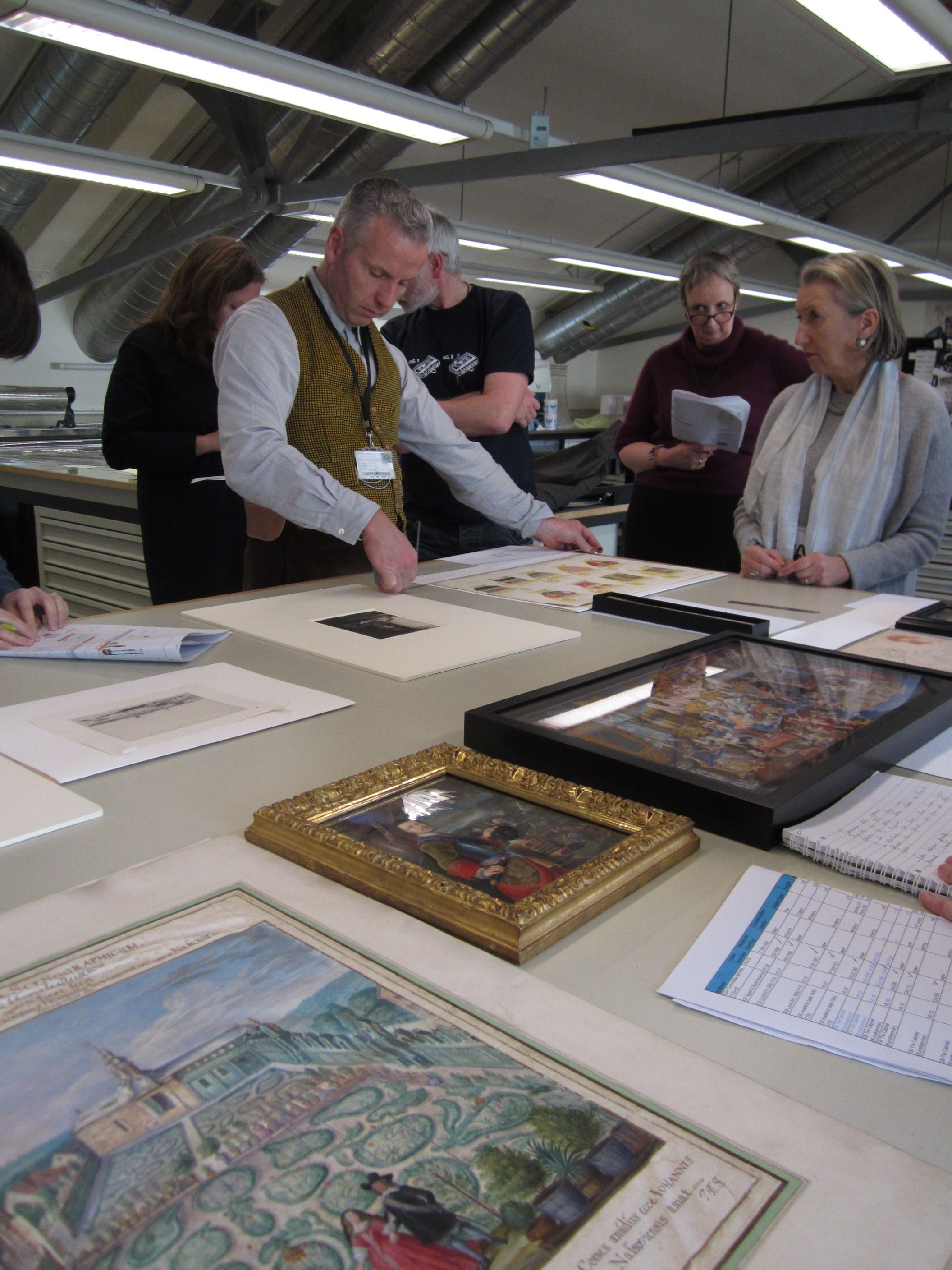Some of the objects going into the galleries cannot be displayed in the usual display cases, most often because an object is particularly light sensitive. This means that its condition and stability would deteriorate if it was kept on long-term display, exposed to a constant light.
To enable some of these sensitive objects to be included in the galleries, they will be housed in drawers that visitors will be able pull out from the display cases. They will thus be able to see the objects close-up, without over-exposing the objects to the light. This protective method is used already in other galleries in the Museum.


The majority of our ‘drawer objects’ are from our Paintings, Prints and Drawings Collections and they vary considerably in size, shape, medium and style.
The objects will be displayed throughout the galleries, as part of different subjects. Each object has its own individual display requirements. However it remains important for us to ensure that we take a consistent, coherent and rationalised approach to their presentation in the drawers.
The most pragmatic way of attaining this was to bring as many of the objects as possible together in one place to assess and discuss possible display techniques. The core Europe Team joined conservators, Museum technicians (who will be creating some of the mounts and drawer inserts) and curators from the Paintings Department for a session focused entirely on drawers.

Decisions as to how objects will appear in the drawers are guided by determining:
- What measures are required to hold the object securely in place?
- What method of presentation is most appropriate to the subject of the display?
- What other objects will occupy the same drawer and how might they best sit together visually?
Although the drawers will provide a protected environment, we need to determine how best to prevent objects being affected by the movement of the drawer being opened and closed. This may require some objects to be sunk into a supportive frame or held in place by clips.
A small number of the objects have existing frames that are not original to the object. This means that decisions need to be made whether it is appropriate or practical to display them in these frames.

We also need to consider how the display method can help objects of varying sizes, materials or subject appear most comfortable and coherent alongside each other.
Mounts used to hold and display works on paper are selected both to protect and enhance the object. The mounts most commonly used are called ‘window mounts’. These create a frame for the objects, so that they are then viewed though the ‘window’.

These mounts often usefully cover the edges of the sheet so that damaged edges or other marks on the sheet do not distract the viewer’s attention from the design or drawing being shown. Sometimes such additional features can be particularly relevant to the context in which the object is being displayed. This can prompt us to take a different approach to the mounting of an object. For example, these watercolours were originally collected and bound together to comprise a florilegium (flower book) illustrating the plants collected by Count Johann of Nassau-Idstein for the gardens at his castle in Idstein (Germany) in the 1650s.


Along one edge of each sheet there are holes visible. They were created when the pages were bound together. As the prints are being included in a display focused on concepts of collectors and collecting, these holes provide a visual reminder of their history as part of a collection. It would therefore be considered appropriate to make these holes visible in their display, rather than masking them by the framing of a ‘window mount’.


As I hope you can now appreciate, a variety of factors need to be thoroughly considered before we make definite decisions on how objects are to be displayed in drawers.




Dear Ms. Hoskin,
I would like to invite you to visit our intelligent conservation products, designed with electro-optic glass to reduce UV, visible and IR light damage on sensitive museum art.
Please visit our website where you can view our most recent installation which protects an original map of the 1815 Battle of Waterloo at the Royal Engineers Museum in Kent.
Do contact me if you would like further information.
kind regards,
Mr. Manoj Phatak,
Founder & CEO, Domoticware
http://www.domoticware.com